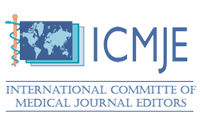Üç Farklı Kateter Sabitleme Tekniğinde Epidural Kateter Migrasyonunun Karşılaştırılması: Prospektif Randomize Bir Çalışma
Vidarshna Viburajah, Venkatesh Selvaraj, Sree Kumar E J, Sathish KalyanSri Ramachandra Yüksek Öğrenim ve Araştırma Enstitüsü, Chennai, HindistanAmaç: Postoperatif dönemde epidural kateter migrasyonunu önlemede subkutan tünellemenin daha etkili olacağını varsaydık. Epidural kateter migrasyonu için üç farklı fiksasyon tekniğini karşılaştırdık.
Yöntem: Lomber epidural ile postoperatif analjezi planlanarak elektif cerrahi uygulanan hastalar dahil edildi. Kateter fiksasyonuna göre 3 gruba ayrıldı – Grup I: şeffaf yapışkan pansuman bandı, Grup II: fiksatör cihazı (LockIt Plus®) ve Grup III: dikey olarak subkutan tünel açılan kateter. Kateter işareti, yerleştirme sırasında ve ikinci günün sonunda çıkarıldığında not edildi. Birincil sonuç ölçütü epidural kateter migrasyonuydu; ikincil sonuç ölçütleri komplikasyonlar ve hasta memnuniyet skorlarıydı.
Bulgular: Çalışmaya, cerrahi uygulanan 170 hastadan 150’si dahil edildi. Grup I’in grup II’ye kıyasla Göç Olasılığı oranı (LR) 13.28 (p<0.001), grup III ile 7.06 (p=0.007) idi. Grup II ve III arasında anlamlı bir fark yoktu (LR 1,12, p=0,29). Memnuniyet puanları Grup II ve III arasında karşılaştırılabilirdi. Gruplar arasında komplikasyon açısından fark yoktu.
Sonuç: Epidural migrasyon, postoperatif ilk iki günde sürekli lomber epidural analjezi uygulanan hastalarda hem tünelleme hem de Lockit plus® yöntemleriyle transparan adeziv ile karşılaştırıldığında anlamlı olarak azaldı. Subkutan tünel açma yöntemi migrasyon açısından LockIt plus® sabitleme yöntemi kadar güvenli bulundu.
Comparison of Epidural Catheter Migration in Three Different Techniques of Catheter Fixation: A Prospective Randomised Study
Vidarshna Viburajah, Venkatesh Selvaraj, Sree Kumar E J, Sathish KalyanSri Ramachandra Institute of Higher Education and Research, Chennai, IndiaObjective: We hypothesized that subcutaneous tunnelling will be more efficacious in preventing epidural catheter migration in the postoperative period. To compare three different fixation techniques for migration of epidural catheter in the postoperative period.
Methods: Patients undergoing elective surgery with planned postoperative analgesia with lumbar epidural were included. They were divided into 3 groups based on catheter fixation – Group I: transparent adhesive dressing tape, Group II: fixator device (Locklt Plus®) and Group III: catheter subcutaneously tunnelled vertically. The catheter mark was noted during insertion and on removal at the end of second day. The primary outcome measure was epidural catheter migration; the secondary outcome measures were complications and patient satisfaction scores.
Results: Of the 170 patients recruited, 150 patients were included. The Likelihood Ratio (LR) of migration of group I in comparison to group II was 13.28 (p<0.001) while with group III was 7.06 (p=0.007). There was no significant difference between groups II and III (LR 1.12, p=0.29). The satisfaction scores were comparable among Groups II and III. There was no difference in complications among groups.
Conclusion: Epidural migration is significantly reduced by both tunnelling and Lockit plus® methods in comparison to a transparent adhesive dressing in patients on continuous lumbar epidural analgesia in the first two postoperative days. The subcutaneous tunnelling method is as safe in terms of migration as the LockIt plus® method of fixation.
Makale Dili: İngilizce
(430 kere indirildi)












